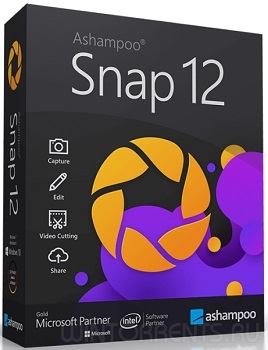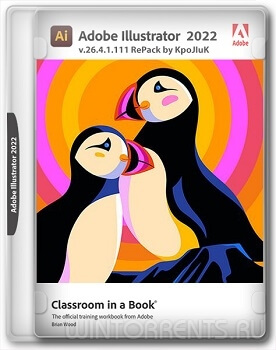Войти на сайт
Войти на сайт
WinToUSB Free / Pro / Enterprise / Technician 7.2 RePack (& Portable) by DodakaedrLEX LIVE 10 2022 (x64) v.22.10.52k10 Next v.08.02.2022 Ru by conty9System software for Windows v.3.5.6 By CUTAZD Soft Screen Recorder 11.5.5.0 RePack (& Portable) by elchupacabraLEX LIVE 10 (x64) RUS v.22.10.3Wise Care 365 Pro 6.3.5.613 RePack (& Portable) by elchupacabraWondershare Filmora 11.7.3.814 RePack by PooShockSysAdmin Software Portable by rezorustavi 20.09.2022
SideFx Houdini FX 15.5.480 (2016) [Eng]
![SideFx Houdini FX 15.5.480 (2016) [Eng]](/uploads/posts/2016-05/14639147241bd154e371a5b.jpg)
Версия программы: 15.5.480
Официальный сайт: sidefx
Язык интерфейса: Английский
Лечение: в комплекте
Системные требования:
Windows 7 SP1, Windows 8, Windows 8.1, or Windows 10 (только 64 bit)
Оперативная память: 4 GB необходимо, 8 GB и 64bit для симуляции жидкостей
Процессор: Последние поколения 32 или 64-bit AMD or Intel (необходима SSE, поддерживает SSE2 и MMX)
Свободное место на жестком диске: 1GB для установки программы
Видеокарта с поддержкой OpenGL 3.3 (необходима для работы) и 2GB видео памяти.
Описание:
Houdini FX сочетает в себе высокую производительность и легкость в использовании, чтобы дать мощный и доступный 3D опыт VFX художников, создающих художественные фильмы, рекламные ролики или видео игры. С процедурной системой, основанной на узлах рабочего процесса, Houdini позволит вам создавать больше и быстрее контента, чтобы уменьшить сроки и наслаждаться повышенной гибкостью во всех ваших творческих задачах. Houdini идеально подходит для художников визуальных эффектов и технических директоров с его системой частиц и динамическим окружением. Houdini FX включает в себя полный набор инструментов для студий, которые хотят использовать его для других задач, таких как освещение, анимацию или процедурную генерацию.
Houdini FX combines superior performance and dramatic, ease-of-use to deliver a powerful and accessible 3D experience to VFX artists creating feature films, commercials or video games. With its procedural node-based workflow, Houdini lets you create more content faster to reduce timelines and enjoy enhanced flexibility in all your creative tasks. Houdini is perfect for Visual Effects artists and technical directors with its particle and dynamics environment. Houdini FX includes a complete toolset for studios that want to use it for other tasks such as lighting, animation or procedural modeling.
MODELING, RENDERING, ANIMATION
Houdini FX includes all the base Houdini features including modelling, animation, character rigging, lighting, rendering, compositing and volumes. Digital Assets created in Houdini FX can be opened, animated and rendered in Houdini.
PYRO FX
With Pyro FX , Fire and Smoke simulations look more realistic and are faster and easier to set up. The speed gains in Houdini are significant allowing for more iterations. The ability to simulate using the GPU takes things to a whole new level and advances in volume rendering create an impressive final look.
FLUIDS & OCEAN FX
Create realistic sims using forces such as surface tension, viscosity, and visco-elasticity. Particle fluids can be surfaced at the geometry level to produce high quality splashes while fluild forces are used to create white water effects.
BULLET RBD
In Houdini FX, you can use the Bullet Rigid Body solver to create highly complex simulations of large data sets. This solver and Houdini’s own solver work with various forces, constraints and collisions for complete control.
PARTICLES
Whether you are creating dust and debris or a flocks of birds, the particle tools in Houdini let you define a clear set of rules using a simple node network made up of sources, forces, attractors and collision objects.
FINITE ELEMENTS
The Finite Element solver analyzes the stresses on an object then either bends or breaks the object. It can also be used for soft body effects with volume preservation. Take the simulation of digital destruction, and gooey slimy objects, to the next level.
CLOTH
Houdini FX’s cloth solver can handle multiple layers while generating accurate, realistic results over long simulations. By adjusting a few simple parameters, you can achieve a variety of different looks and material types.
WIRE & FUR
Ideally suited to creating hair and fur simulations, the Wire solver in Houdini FX also can be used for other types of thin shapes. Control wires with attributes such as thickness, length, rigidity and curl for added control.
CROWDS
The crowd tools use artist-friendly shelf tools along with a new packed agent primitive type, a Finite State Machine solver, hardware accelerated display of instanced crowds, controls for crowd layout, steering, collision avoidance, terrain adaptation, motion blending, and look-at targets.
MODELING, RENDERING, ANIMATION
Houdini FX includes all the base Houdini features including modelling, animation, character rigging, lighting, rendering, compositing and volumes. Digital Assets created in Houdini FX can be opened, animated and rendered in Houdini.
PYRO FX
With Pyro FX , Fire and Smoke simulations look more realistic and are faster and easier to set up. The speed gains in Houdini are significant allowing for more iterations. The ability to simulate using the GPU takes things to a whole new level and advances in volume rendering create an impressive final look.
FLUIDS & OCEAN FX
Create realistic sims using forces such as surface tension, viscosity, and visco-elasticity. Particle fluids can be surfaced at the geometry level to produce high quality splashes while fluild forces are used to create white water effects.
BULLET RBD
In Houdini FX, you can use the Bullet Rigid Body solver to create highly complex simulations of large data sets. This solver and Houdini’s own solver work with various forces, constraints and collisions for complete control.
PARTICLES
Whether you are creating dust and debris or a flocks of birds, the particle tools in Houdini let you define a clear set of rules using a simple node network made up of sources, forces, attractors and collision objects.
FINITE ELEMENTS
The Finite Element solver analyzes the stresses on an object then either bends or breaks the object. It can also be used for soft body effects with volume preservation. Take the simulation of digital destruction, and gooey slimy objects, to the next level.
CLOTH
Houdini FX’s cloth solver can handle multiple layers while generating accurate, realistic results over long simulations. By adjusting a few simple parameters, you can achieve a variety of different looks and material types.
WIRE & FUR
Ideally suited to creating hair and fur simulations, the Wire solver in Houdini FX also can be used for other types of thin shapes. Control wires with attributes such as thickness, length, rigidity and curl for added control.
CROWDS
The crowd tools use artist-friendly shelf tools along with a new packed agent primitive type, a Finite State Machine solver, hardware accelerated display of instanced crowds, controls for crowd layout, steering, collision avoidance, terrain adaptation, motion blending, and look-at targets.
Официальный превью ролик изменений релиза на vimeoMODEL
With Houdini 15, modellers will be able to work more efficiently with a new tweak edit workflow, edge sliding and new tools such as PolyBridge, PolyExtrude and PolyExpand 2D. For working with hi-res models, new retopology tools provide a way of building low-res geometry out of high-res geometry.
These improvements will be particularly useful for game artists building procedural tools for use in game editors such as Unity and Unreal. The PolyExpand2D tool in particular was built with game modeling in mind.
RENDER
Rendering in Houdini 15 is faster and richer with improvements to shader building, material overrides and support for RenderMan 20. Shader Building, in particular, has been enhanced with a new shader library, a rebuilt Shader FX menu, Layered Materials and a cartoon shader.
Material stylesheets create a production-level workflow for creating and managing material overrides. Easily set up random textures and variances in material settings to give a unique look to a collection of similar items such as crowd agents.
ANIMATE
The animation workflow in Houdini 15 is better than ever with onion skinning, a pose library panel and improvements to the dope sheet. This makes it easier to pose and keyframe characters within Houdini.
New simple male and simple female rigs provide sample characters that you can use to explore the animation tools in Houdini. Each is built as a digital asset and includes setups for the character picker and pose library. Riggers can open up the assets and explore the networks to learn how to rig in Houdini.
CROWDS
Ragdoll dynamics have been added to the Houdini 15 crowd tools along with limb detachment, fuzzy logic and better crowd behaviour. It is now easier to set up material and geometry variations and tools have been added to set up explicit target locations.
You can look through the agent CAM to see things from an agent’s point of view and the tag visualizer can be used for enhanced inspection of agents’ states and properties.
VFX
Houdini 15 will make VFX artists more productive and capable of bigger, more dynamic FX. The new adaptive PBD lets you focus grain simulations on collision areas. New viscous fluids tools such as Lava, Melt Object and Emit Steam give artists quick access to a number of typical FX.
Fluid and PBD simulations can now be distributed Simulations to multiple nodes on your farm to create and manage the resulting big data. These simulations let you accomplish more and the results fit together seamlessly when rendering.
GAMES
With Houdini 15, many features have been added with game makers in mind. From new modeling tools such as PolyExtrude, PolyBridge and PolyExpand 2D, to UV Editing enhancements to new Retopo tools, it will be easier to build game art in Houdini 15. Texture baking and support for tangent space normal maps are important improvements.
For game makers taking advantage of the Houdini Engine plug-ins for Unreal and Unity, the new thin client support and overall improvements make it even easier build Houdini Digital Assets that work inside your chosen game editor.
With Houdini 15, modellers will be able to work more efficiently with a new tweak edit workflow, edge sliding and new tools such as PolyBridge, PolyExtrude and PolyExpand 2D. For working with hi-res models, new retopology tools provide a way of building low-res geometry out of high-res geometry.
These improvements will be particularly useful for game artists building procedural tools for use in game editors such as Unity and Unreal. The PolyExpand2D tool in particular was built with game modeling in mind.
RENDER
Rendering in Houdini 15 is faster and richer with improvements to shader building, material overrides and support for RenderMan 20. Shader Building, in particular, has been enhanced with a new shader library, a rebuilt Shader FX menu, Layered Materials and a cartoon shader.
Material stylesheets create a production-level workflow for creating and managing material overrides. Easily set up random textures and variances in material settings to give a unique look to a collection of similar items such as crowd agents.
ANIMATE
The animation workflow in Houdini 15 is better than ever with onion skinning, a pose library panel and improvements to the dope sheet. This makes it easier to pose and keyframe characters within Houdini.
New simple male and simple female rigs provide sample characters that you can use to explore the animation tools in Houdini. Each is built as a digital asset and includes setups for the character picker and pose library. Riggers can open up the assets and explore the networks to learn how to rig in Houdini.
CROWDS
Ragdoll dynamics have been added to the Houdini 15 crowd tools along with limb detachment, fuzzy logic and better crowd behaviour. It is now easier to set up material and geometry variations and tools have been added to set up explicit target locations.
You can look through the agent CAM to see things from an agent’s point of view and the tag visualizer can be used for enhanced inspection of agents’ states and properties.
VFX
Houdini 15 will make VFX artists more productive and capable of bigger, more dynamic FX. The new adaptive PBD lets you focus grain simulations on collision areas. New viscous fluids tools such as Lava, Melt Object and Emit Steam give artists quick access to a number of typical FX.
Fluid and PBD simulations can now be distributed Simulations to multiple nodes on your farm to create and manage the resulting big data. These simulations let you accomplish more and the results fit together seamlessly when rendering.
GAMES
With Houdini 15, many features have been added with game makers in mind. From new modeling tools such as PolyExtrude, PolyBridge and PolyExpand 2D, to UV Editing enhancements to new Retopo tools, it will be easier to build game art in Houdini 15. Texture baking and support for tangent space normal maps are important improvements.
For game makers taking advantage of the Houdini Engine plug-ins for Unreal and Unity, the new thin client support and overall improvements make it even easier build Houdini Digital Assets that work inside your chosen game editor.
Официальный превью ролик изменений релиза на vimeoGeometry
New
Rewrote PolyBevel SOP to do state-of-the-art beveling.
Rewrote Polysplit SOP with better interactive insertion of edges and edge loops.
Rewrote Dissolve SOP to be more intuitive, faster, and more reliable.
Delta Mush deformer smooths arbitrary deformations applied to a polygonal mesh, without smoothing out the detail of the original model.
PolyExpand2D now supports variable width offsets and primitive attributes. This is important for road generation and roofing offsets.
TopoBuild has new tools for splitting polygons and brushing to move or smooth points.
Improved
Better/tighter packing of UV islands in the UV Layout SOP.
Faster saving of large polygon soups under some conditions, most notably IPR renders.-User experience
New
You can now copy and paste multiple rows and columns in the Parameter Spreadsheet. You can use this to copy all channel references on a node to another node at once.
The viewport now shows displacements for surfaces with a GL Displacement map parameter. See the Open GL ROP and on the Effects tab of the 3D Display options. This feature requires OpenGL 4.0.
New option for Euler tumbling in the viewport allows you to tumble the view over the poles.
Double-click for edge loop selection.
Double-click points or primitives in the viewport to select connected geometry.
Improved
Cleaner help layout and improved search.
- You can switch the display of lists of items such as HOM methods and environment variables to alphabetical order.
- The search now shows "inline" results for nodes, VEX functions, HOM functions/methods, HScript commands and expressions, and common attributes.
- A list of categories to the left of search results lets you filter the results quickly.
Various handle UI improvements including the display of an outer ring for rotating around the current view axis, the ability to turn off negative axis drawing of translate handles, and the display small draggable translate planes away from the center of the handle. For information, see Using handles.
Improvements to the File Chooser.
Better geometry snapping, including the ability to snap to X-ray geometry.
HOM interface for Flipbooking. For more information see hou.FlipbookSettings.
Fixed
Overlapping multi-selections in Dopesheet and Playbar.-Crowds
New
New foot planting workflow supported by new parameters on various nodes.
Transition graphs let you specify multi-clip transitions at specific frames between agent states.
You can now directly import or render FBX characters as agents.
Added many new controls to the Crowd State DOP for animation clips, such as options for adjusting the clip and/or locomotion speed, retiming behavior, and allowed speed variance.
The new Agent Terrain Adaptation SOP lets you add terrain adaptation to animated agents after a simulation, or use it for simple crowd shots that don’t involve simulation.
New Agent CHOP imports clips from an agent primitive into CHOPs.
New Mocap Biped 3 character on the Character shelf tab. This character has better walk cycles, making it useful to test the new foot-planting features.
Houdini now uses vertex normals when deforming agent shapes. This is particularly useful for FBX files, since they typically have vertex normals.
Added support for baking additional (non-transform) channels into agents' animation clips. The new Foot Plant CHOP uses this to add channels describing when a foot is planted.
Changed
New versions of the Crowd Solver, Crowd State DOP, Crowd Transition DOP, Crowd Source SOP, Agent Prep SOP, and Agent Terrain Adaptation DOP.
The new versions move, rename, and reorganize some parameters to make the behavior of and interaction between the parameters clearer.
The Crowd Source SOP is now optional. Any required attributes are initialized by the crowd solver if they don’t already exist.
Redesigned parameter interface for crowds
Added support for agents that do not face down +Z and/or are not Y-up.
The Agent Configure Joints SOP can now automatically compute initial joint limits from an agent’s animation clips.
Improved
Crowd steering behavior, which reduces sliding and spinning for agents.
Support for locomotive clips, specifically looping and transitioning between locomotive clips.
Usability and robustness of the crowd shelf tools.
Terrain adaptation and support for foot locking.
Enhanced clip-driven transition controls for crowds.-Lighting and rendering
New
VR lens shader, which supports standard projection modes (latlong/cubemap), as well as control over eye separation and eye/neck distance. The Oculus Rift headset is being used to validate the output image format. A Perspective mode has also been added to the shader, to allow rendering of stereo pairs.
There is now curvature support for UV Bake. This is done with a new Curvature VOP that provides various properties of surface curvature, such as Gaussian, mean, convexity, concavity, and magnitude. Curvature can be used to add wear to surfaces, and as a control mask for dirt and rust. An output is now available on the VR lens shader for this type of shading.
Depth of Field and Motion Blur are now available in the OpenGL ROP.
Third party rendering in Houdini Indie.
You can now add a Photon modifier property to objects to control how Mantra traces photons through the scene.
New UV Triplanar Projection VOP lets you project repeating textures onto geometry easily.
SOHO output drivers have a Render to Disk in Background button. This works like all other Render … in Background buttons, requiring a saved .hip file to work properly.
Changed
The Bake Shader has been removed, with the functionality being moved into the VR lens shader. This means that any image plane can be baked, as opposed to be limited to a fixed set of planes.
Bake shading controls have been moved from the Bake Texture ROP to standard shaders, which means bake settings can be adjusted on a per-object basis.
Improved
HQueue performance optimizations. The web interface and RPC are significantly more responsive.
Optimized tree view picker for the Alembic SOP
Alembic ROP’s exporting of packed fragment primitives.
The point replicate procedural now has an option to unpack the template geometry.
Fixed
You can now render extra “overscan” image data outside the display window in image formats that support it (for example .pic and .exr). This extra image data may be useful to other software such as Nuke.-Hair, Fur, and Grooming
New
You can now change selections within a single Curve Groom SOP.
A Length Scale parameter on the Appearance tab of the Fur Object allows for small post groom adjustments.
UDIM support for hair shader textures.
Parameter to control which attributes to keep on external guides.
Hair shader asset. The hair material in the gallery and the Fur object both use this, so from now on they will be in sync.
Improved
When the current object is a fur object or you are inside a fur object, the skin painting tools will use that object without asking for a selection.
Restored stroke caching in the Curve Groom SOP.
Fixed
Fixed a bug where attributes called "prim" and "primuv" were created on external guides when Snap to Skin was on.
Fixed a bug where creating a new Curve Groom node using one of the grooming shelf tools (for example using Ctrl+Click or after selecting a different set of primitives) copied invisible parameters, which could cause cached guide geometry to be transferred to the new SOP.-Scripting
New
You can now script the creation of flipbooks. See hou.FlipbookSettings.-VEX
Improved
Faster VEX loading and lower memory usage. This affects all VEX code from Wrangle SOPs to Mantra shaders.
New
Rewrote PolyBevel SOP to do state-of-the-art beveling.
Rewrote Polysplit SOP with better interactive insertion of edges and edge loops.
Rewrote Dissolve SOP to be more intuitive, faster, and more reliable.
Delta Mush deformer smooths arbitrary deformations applied to a polygonal mesh, without smoothing out the detail of the original model.
PolyExpand2D now supports variable width offsets and primitive attributes. This is important for road generation and roofing offsets.
TopoBuild has new tools for splitting polygons and brushing to move or smooth points.
Improved
Better/tighter packing of UV islands in the UV Layout SOP.
Faster saving of large polygon soups under some conditions, most notably IPR renders.-User experience
New
You can now copy and paste multiple rows and columns in the Parameter Spreadsheet. You can use this to copy all channel references on a node to another node at once.
The viewport now shows displacements for surfaces with a GL Displacement map parameter. See the Open GL ROP and on the Effects tab of the 3D Display options. This feature requires OpenGL 4.0.
New option for Euler tumbling in the viewport allows you to tumble the view over the poles.
Double-click for edge loop selection.
Double-click points or primitives in the viewport to select connected geometry.
Improved
Cleaner help layout and improved search.
- You can switch the display of lists of items such as HOM methods and environment variables to alphabetical order.
- The search now shows "inline" results for nodes, VEX functions, HOM functions/methods, HScript commands and expressions, and common attributes.
- A list of categories to the left of search results lets you filter the results quickly.
Various handle UI improvements including the display of an outer ring for rotating around the current view axis, the ability to turn off negative axis drawing of translate handles, and the display small draggable translate planes away from the center of the handle. For information, see Using handles.
Improvements to the File Chooser.
Better geometry snapping, including the ability to snap to X-ray geometry.
HOM interface for Flipbooking. For more information see hou.FlipbookSettings.
Fixed
Overlapping multi-selections in Dopesheet and Playbar.-Crowds
New
New foot planting workflow supported by new parameters on various nodes.
Transition graphs let you specify multi-clip transitions at specific frames between agent states.
You can now directly import or render FBX characters as agents.
Added many new controls to the Crowd State DOP for animation clips, such as options for adjusting the clip and/or locomotion speed, retiming behavior, and allowed speed variance.
The new Agent Terrain Adaptation SOP lets you add terrain adaptation to animated agents after a simulation, or use it for simple crowd shots that don’t involve simulation.
New Agent CHOP imports clips from an agent primitive into CHOPs.
New Mocap Biped 3 character on the Character shelf tab. This character has better walk cycles, making it useful to test the new foot-planting features.
Houdini now uses vertex normals when deforming agent shapes. This is particularly useful for FBX files, since they typically have vertex normals.
Added support for baking additional (non-transform) channels into agents' animation clips. The new Foot Plant CHOP uses this to add channels describing when a foot is planted.
Changed
New versions of the Crowd Solver, Crowd State DOP, Crowd Transition DOP, Crowd Source SOP, Agent Prep SOP, and Agent Terrain Adaptation DOP.
The new versions move, rename, and reorganize some parameters to make the behavior of and interaction between the parameters clearer.
The Crowd Source SOP is now optional. Any required attributes are initialized by the crowd solver if they don’t already exist.
Redesigned parameter interface for crowds
Added support for agents that do not face down +Z and/or are not Y-up.
The Agent Configure Joints SOP can now automatically compute initial joint limits from an agent’s animation clips.
Improved
Crowd steering behavior, which reduces sliding and spinning for agents.
Support for locomotive clips, specifically looping and transitioning between locomotive clips.
Usability and robustness of the crowd shelf tools.
Terrain adaptation and support for foot locking.
Enhanced clip-driven transition controls for crowds.-Lighting and rendering
New
VR lens shader, which supports standard projection modes (latlong/cubemap), as well as control over eye separation and eye/neck distance. The Oculus Rift headset is being used to validate the output image format. A Perspective mode has also been added to the shader, to allow rendering of stereo pairs.
There is now curvature support for UV Bake. This is done with a new Curvature VOP that provides various properties of surface curvature, such as Gaussian, mean, convexity, concavity, and magnitude. Curvature can be used to add wear to surfaces, and as a control mask for dirt and rust. An output is now available on the VR lens shader for this type of shading.
Depth of Field and Motion Blur are now available in the OpenGL ROP.
Third party rendering in Houdini Indie.
You can now add a Photon modifier property to objects to control how Mantra traces photons through the scene.
New UV Triplanar Projection VOP lets you project repeating textures onto geometry easily.
SOHO output drivers have a Render to Disk in Background button. This works like all other Render … in Background buttons, requiring a saved .hip file to work properly.
Changed
The Bake Shader has been removed, with the functionality being moved into the VR lens shader. This means that any image plane can be baked, as opposed to be limited to a fixed set of planes.
Bake shading controls have been moved from the Bake Texture ROP to standard shaders, which means bake settings can be adjusted on a per-object basis.
Improved
HQueue performance optimizations. The web interface and RPC are significantly more responsive.
Optimized tree view picker for the Alembic SOP
Alembic ROP’s exporting of packed fragment primitives.
The point replicate procedural now has an option to unpack the template geometry.
Fixed
You can now render extra “overscan” image data outside the display window in image formats that support it (for example .pic and .exr). This extra image data may be useful to other software such as Nuke.-Hair, Fur, and Grooming
New
You can now change selections within a single Curve Groom SOP.
A Length Scale parameter on the Appearance tab of the Fur Object allows for small post groom adjustments.
UDIM support for hair shader textures.
Parameter to control which attributes to keep on external guides.
Hair shader asset. The hair material in the gallery and the Fur object both use this, so from now on they will be in sync.
Improved
When the current object is a fur object or you are inside a fur object, the skin painting tools will use that object without asking for a selection.
Restored stroke caching in the Curve Groom SOP.
Fixed
Fixed a bug where attributes called "prim" and "primuv" were created on external guides when Snap to Skin was on.
Fixed a bug where creating a new Curve Groom node using one of the grooming shelf tools (for example using Ctrl+Click or after selecting a different set of primitives) copied invisible parameters, which could cause cached guide geometry to be transferred to the new SOP.-Scripting
New
You can now script the creation of flipbooks. See hou.FlipbookSettings.-VEX
Improved
Faster VEX loading and lower memory usage. This affects all VEX code from Wrangle SOPs to Mantra shaders.
1. Устанавливаем Houdini вместе с сервером лицензий
2. Останавливаем службу сервера лицензирования (панель управления / администрирование)
3. Заменяем файл sesinetd в папке windowssystem32 на пролеченный из раздачи
4. Стартуем службу сервера лицензирования (необходимо для применения лицензий)
5. Запускаем License Administrator (с ярлыка в меню пуск или запуском файла hkey.exe)
6. В кейгене, подставляем host и Code из 2 вкладки сервера лицензий и генерируем лицензии
7. Открываем ввод ключей вручную в сервере (меню file / manually enter keys)
8. Переносим построчно первые 5 строк из кейгена (можно все 11 из окошка license keys)
(первая строка - дает нужное число лицензий, остальные - разновидности лицензий)
9. в итоге появится список лицензий, и на второй вкладке все пункты отметятся зеленым цветом
10. можете работать в Houdini
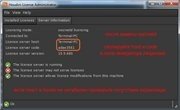


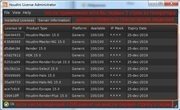
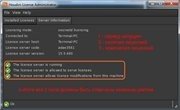
2. Останавливаем службу сервера лицензирования (панель управления / администрирование)
3. Заменяем файл sesinetd в папке windowssystem32 на пролеченный из раздачи
4. Стартуем службу сервера лицензирования (необходимо для применения лицензий)
5. Запускаем License Administrator (с ярлыка в меню пуск или запуском файла hkey.exe)
6. В кейгене, подставляем host и Code из 2 вкладки сервера лицензий и генерируем лицензии
7. Открываем ввод ключей вручную в сервере (меню file / manually enter keys)
8. Переносим построчно первые 5 строк из кейгена (можно все 11 из окошка license keys)
(первая строка - дает нужное число лицензий, остальные - разновидности лицензий)
9. в итоге появится список лицензий, и на второй вкладке все пункты отметятся зеленым цветом
10. можете работать в Houdini





Скачать похожие торренты
Комментарии пользователей
Добавить комментарий

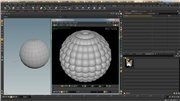
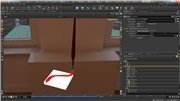
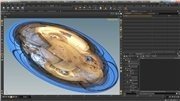
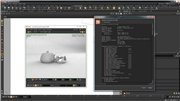

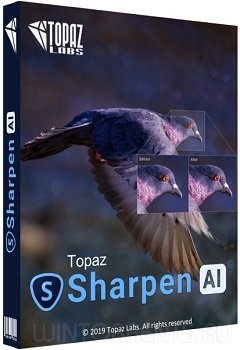
![Topaz Labs Photoshop Plugins Bundle 2016 RePack by D!akov (2016) [Eng]](/uploads/posts/2016-11/1479596775_va90rl865pvr988v08ap856d7blva.jpg)
